How Has COVID-19 Affected Wildlife Conservation?
The COVID-19 pandemic has been a global phenomenon that has impacted nearly every aspect of our lives, and wildlife conservation is no exception. As the world grappled with the health crisis, conservationists faced a unique set of challenges and opportunities. Imagine a world where the hustle and bustle of human activity suddenly quieted down, allowing nature to reclaim its space. This unexpected pause has led to both positive and negative consequences for wildlife and the efforts to protect them. In this article, we will delve into the multifaceted impacts of COVID-19 on wildlife conservation, exploring how the pandemic has reshaped funding, research methodologies, wildlife populations, and even legislation. The narrative unfolds like a story of resilience, adaptation, and the ever-evolving relationship between humans and nature.
The pandemic has significantly disrupted funding sources for wildlife conservation, leading to budget cuts and project delays. Many organizations that rely on donations, grants, and tourism income found themselves in dire straits as the world shut down. Conservation projects, which often require substantial financial backing, faced the harsh reality of dwindling resources. For instance, tourism-dependent conservation areas saw a drastic drop in visitors, which directly impacted their operational budgets. Without these funds, vital projects aimed at protecting endangered species or restoring habitats were put on hold. Understanding these financial challenges is crucial for developing adaptive strategies moving forward. Organizations are now exploring alternative funding models, such as online fundraising and partnerships with private sectors, to ensure that conservation efforts can continue despite the financial strain.
COVID-19 has altered the landscape of wildlife research, with restrictions on fieldwork and data collection. Researchers, who are often out in the field gathering critical data, had to adapt their methodologies to continue their work effectively. The pandemic forced many to rethink traditional approaches, leading to a surge in creativity and innovation. For example, teams that once relied heavily on in-person surveys and field studies pivoted to remote data collection methods. This shift not only maintained the momentum of research but also opened the door for new techniques that could be beneficial long after the pandemic is over.
The rise of remote monitoring technologies has provided new ways to study wildlife during the pandemic. With travel restrictions and social distancing measures in place, conservationists turned to innovative tools that allowed them to gather data without being physically present. Techniques such as satellite imagery, acoustic monitoring, and automated camera systems became invaluable resources. These technologies not only helped maintain ongoing studies but also provided insights into wildlife behavior during a time of unprecedented human absence from natural habitats.
Camera traps and drones have become essential in monitoring wildlife populations. These tools enabled researchers to capture images and videos of animals in their natural environments without human interference. The effectiveness of these technologies was highlighted during the pandemic, as they allowed for continuous monitoring of wildlife behavior and movements. Insights gained from using these technologies during COVID-19 have proven vital for understanding how reduced human activity can influence wildlife populations and habitats.
Citizen science projects have gained momentum as communities engage in wildlife monitoring. With many researchers sidelined due to restrictions, local volunteers stepped up to fill the gaps. These initiatives not only provided valuable data but also fostered a sense of community and connection to nature. People from all walks of life participated in activities such as birdwatching, data collection, and reporting sightings, contributing to a broader understanding of wildlife dynamics during the pandemic. This grassroots involvement has sparked a renewed interest in conservation and highlighted the importance of community engagement in protecting our natural world.
The pandemic has led to observable shifts in wildlife behavior and populations. Reduced human activity in urban areas and natural habitats allowed some species to thrive in ways not seen in years. For instance, reports of wildlife venturing into cities became more common, as animals reclaimed spaces that were once dominated by humans. This phenomenon raises important questions: What does this mean for conservation efforts? Are we witnessing a temporary change, or could this be a turning point in how we coexist with wildlife? Understanding these shifts is crucial for developing future conservation strategies.
COVID-19 prompted many governments to reevaluate wildlife protection laws. The pandemic highlighted vulnerabilities in wildlife trade and protection, leading to a wave of legislative changes aimed at safeguarding biodiversity. As nations recognized the link between wildlife health and human health, there was a push for stricter regulations to prevent zoonotic diseases. This shift in focus could have lasting implications for conservation, as policies evolve to address both environmental and public health concerns.
Increased scrutiny of wildlife trade has been a significant outcome of the pandemic. The recognition that many zoonotic diseases originate from wildlife has led to new regulations aimed at preventing such occurrences in the future. Governments worldwide are now more vigilant in enforcing laws that protect endangered species and regulate trade practices. These changes could have a profound impact on conservation efforts, as stricter regulations may help reduce poaching and illegal wildlife trade.
The management of protected areas has faced unique challenges during COVID-19. With travel restrictions and lockdowns, conservationists had to adapt their strategies for maintaining these crucial habitats amidst restrictions. Innovative approaches, such as virtual monitoring and community involvement, have emerged as effective ways to ensure that protected areas are managed sustainably. This adaptability showcases the resilience of the conservation community and highlights the importance of flexibility in the face of unforeseen challenges.
- How has COVID-19 impacted wildlife populations? The pandemic led to reduced human activity, allowing some species to thrive and venture into urban areas.
- What changes have occurred in conservation funding? Many organizations faced budget cuts and project delays due to a decline in tourism and donations.
- What are remote monitoring techniques? These are technologies like camera traps and drones that allow researchers to study wildlife without being physically present.
- How can citizen science contribute to wildlife conservation? Local volunteers can help collect data and monitor wildlife, filling gaps left by researchers during the pandemic.
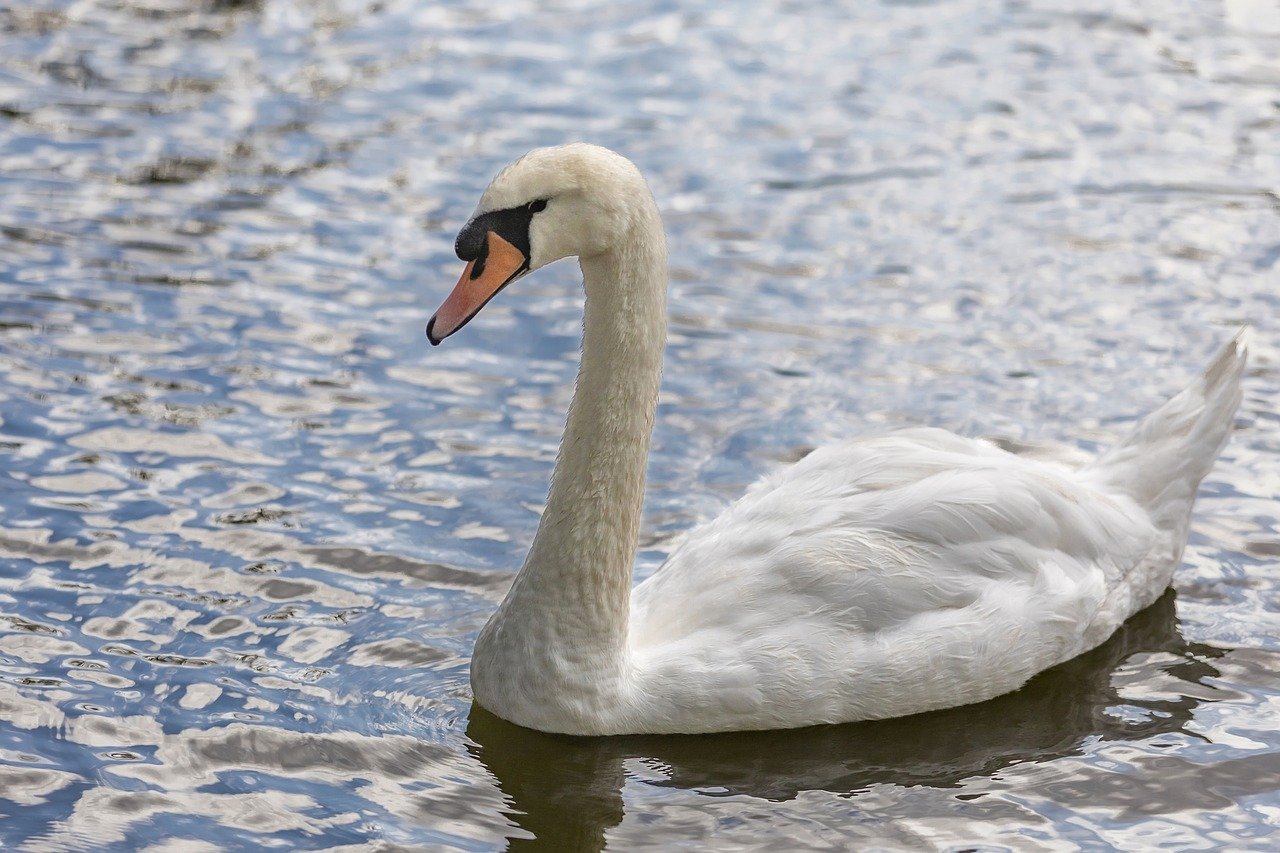
Impact on Conservation Funding
The COVID-19 pandemic has thrown a wrench into the gears of wildlife conservation funding, creating a ripple effect that has been felt across the globe. As countries implemented lockdowns and prioritized health measures, many conservation organizations found themselves grappling with significant financial challenges. Funding sources, which often rely on tourism, donations, and government support, saw a dramatic decline. Imagine a world where the lifeblood of conservation efforts suddenly runs dry; that's the reality many organizations have faced. With budgets slashed and projects postponed, the question arises: how can we adapt and overcome these financial hurdles?
One of the most significant impacts has been on non-profit organizations that depend heavily on public donations and fundraising events. With social distancing measures in place, many of these events were canceled or moved online, resulting in a stark drop in contributions. For instance, a recent survey indicated that nearly 70% of conservation organizations reported a decrease in funding during the pandemic. This funding shortfall has forced many groups to make tough decisions, such as laying off staff, halting critical research, or even closing their doors altogether.
However, amidst this chaos, there are opportunities for innovative funding strategies. Some organizations have turned to digital platforms to engage supporters, hosting virtual events that not only raise funds but also raise awareness about the importance of wildlife conservation. Think of it as a pivot in strategy, where conservationists adapt to the new normal by leveraging technology to connect with their audience. In fact, some have seen a surge in online donations, proving that even in challenging times, there is potential for growth and engagement.
Moreover, governmental support has become crucial during this period. Many nations have recognized the importance of biodiversity and the role that healthy ecosystems play in human health. As a result, some governments have allocated emergency funds specifically for conservation efforts. For example, in 2020, the European Union announced a €1 billion fund aimed at supporting environmental projects, including wildlife conservation, as part of its recovery plan. This kind of financial backing can be a game-changer, providing much-needed resources to sustain vital conservation initiatives.
As we look to the future, it’s essential for conservationists to develop adaptive strategies that can withstand unforeseen challenges like a global pandemic. This might involve diversifying funding sources, building stronger partnerships with the private sector, or embracing technology to reach a broader audience. Ultimately, the resilience of wildlife conservation efforts will depend on our ability to innovate and adapt in the face of adversity.
| Funding Source | Impact of COVID-19 | Potential Recovery Strategies |
|---|---|---|
| Public Donations | Significant decline due to event cancellations | Virtual fundraising events |
| Government Grants | Increased scrutiny and reallocation of funds | Emergency funding initiatives |
| Tourism Revenue | Drastic drop due to travel restrictions | Promoting local tourism and virtual experiences |

Changes in Field Research
The COVID-19 pandemic has dramatically reshaped the landscape of wildlife research, presenting both challenges and opportunities for scientists and conservationists alike. With strict restrictions on fieldwork and data collection, researchers had to pivot their methodologies to continue their vital work. Imagine being a wildlife biologist, ready to embark on a field study, only to find that your plans have been thwarted by a global crisis. This is the reality many faced, forcing them to think outside the box and adapt to an ever-changing environment.
One of the most significant changes has been the increased reliance on technology. Remote monitoring techniques have surged in popularity, allowing researchers to gather data without the need for physical presence in the field. These innovations not only help in maintaining social distancing but also open up new avenues for studying wildlife behavior. For instance, satellite tracking and acoustic monitoring have become essential tools in understanding animal movements and interactions without direct human interference.
As the world grappled with the pandemic, researchers turned to remote monitoring technologies, which have provided new ways to study wildlife during these unprecedented times. These tools have allowed scientists to collect data effectively while adhering to safety protocols. The integration of advanced technologies into wildlife research has been nothing short of a game-changer.
Camera traps and drones have emerged as essential instruments in monitoring wildlife populations. These devices enable researchers to capture images and videos of animals in their natural habitats without disturbing them. The effectiveness of these technologies has been highlighted during COVID-19, as they have allowed for continuous observation of wildlife behavior. For example, camera traps can document nocturnal species that are rarely seen during the day, providing invaluable insights into their habits and population dynamics.
Moreover, drones equipped with high-resolution cameras can cover vast areas quickly, making them ideal for surveying remote locations that are difficult to access. This capability has proven particularly useful in assessing the health of ecosystems and tracking changes in wildlife populations over time. The data collected through these methods not only helps researchers understand the immediate impacts of human activity but also contributes to long-term conservation strategies.
In addition to technological advancements, citizen science projects have gained momentum as communities engage in wildlife monitoring. These initiatives have empowered individuals to contribute to research efforts, filling critical gaps during the pandemic. By leveraging the observations of local residents, scientists can gather valuable data on wildlife populations and behaviors that may otherwise go unnoticed.
Citizen science has fostered a sense of community involvement and awareness regarding wildlife conservation. People are more connected to their local environments and are taking an active role in protecting them. This grassroots approach not only enhances data collection but also raises awareness about the importance of biodiversity and conservation efforts. The collaboration between scientists and citizens exemplifies how collective action can lead to meaningful change, especially in times of crisis.
In summary, the changes in field research brought about by the COVID-19 pandemic have prompted a reevaluation of traditional methodologies. The shift towards remote monitoring and the rise of citizen science initiatives illustrate the resilience and adaptability of the wildlife research community. As we navigate the challenges posed by the pandemic, these innovations offer a glimpse into the future of wildlife conservation, where technology and community collaboration play pivotal roles.
- How has COVID-19 impacted wildlife research? The pandemic has restricted fieldwork and data collection, prompting researchers to adopt new technologies and methodologies.
- What are remote monitoring techniques? These are technologies that allow researchers to study wildlife without being physically present in the field, such as camera traps and drones.
- What role do citizen science initiatives play in wildlife conservation? Citizen science engages local communities in wildlife monitoring, providing valuable data and fostering awareness about conservation efforts.
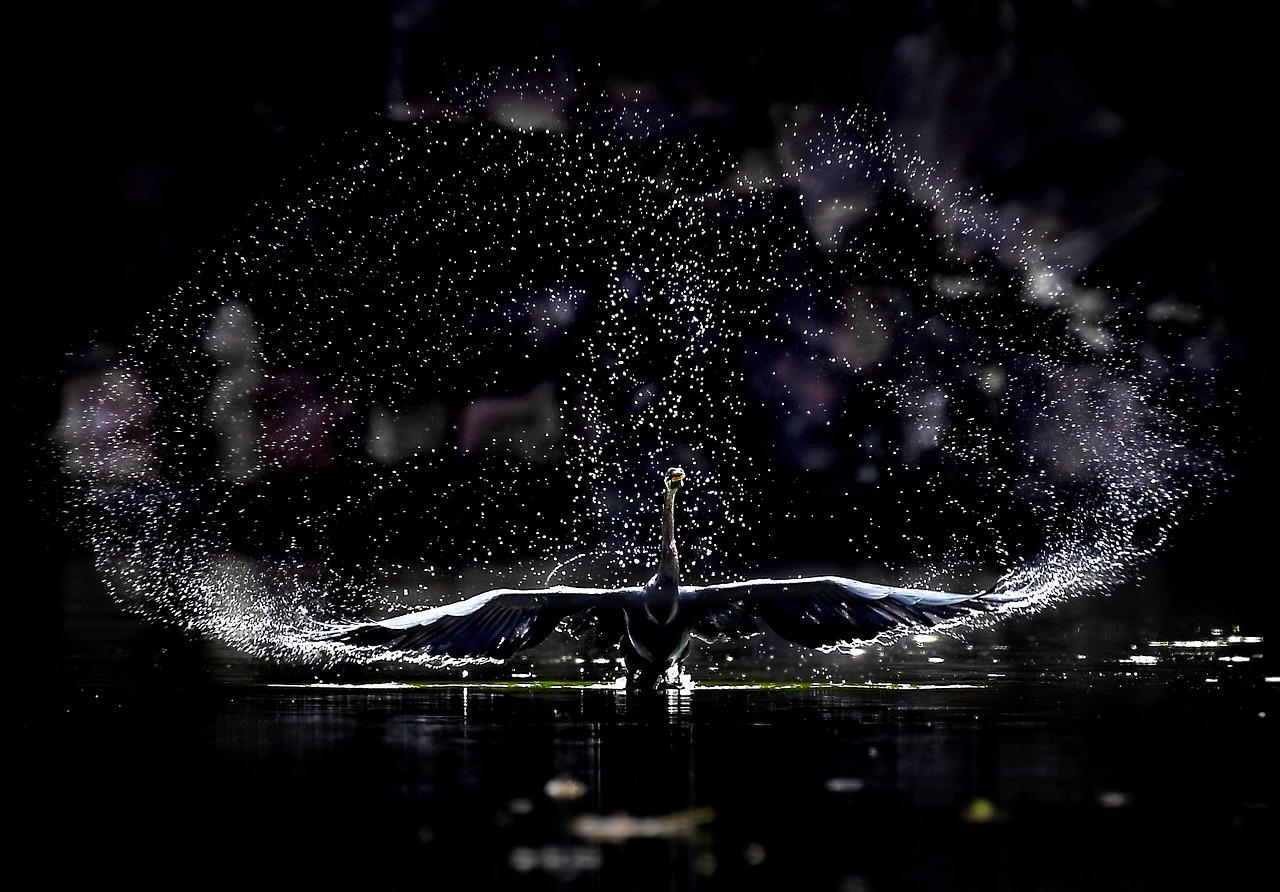
Remote Monitoring Techniques
The COVID-19 pandemic has forced many wildlife researchers to rethink their traditional methodologies, particularly when it comes to fieldwork and data collection. With travel restrictions and social distancing measures in place, the need for innovative solutions has never been more critical. Enter , a game changer in wildlife research that has allowed scientists to continue their important work without the need for physical presence in the field.
One of the most exciting developments in this area has been the rise of advanced technologies that enable researchers to gather data from a distance. For instance, satellite imagery has become an invaluable tool for tracking habitat changes and monitoring animal movements over vast landscapes. This technology allows researchers to analyze areas that are otherwise inaccessible due to restrictions, providing crucial insights into wildlife behavior and habitat use.
Moreover, the integration of GPS collars and tracking devices has revolutionized how we study animal movements. These devices can be attached to various species, from birds to large mammals, and they provide real-time data on their locations and behaviors. This not only helps in understanding migration patterns but also in assessing the impacts of environmental changes on different species. With these tools, researchers can gather a wealth of information without needing to be physically present, thereby ensuring the safety of both the researchers and the wildlife they study.
Another fascinating aspect of remote monitoring is the use of camera traps, which have seen a surge in popularity during the pandemic. These devices are set up in strategic locations to capture images of wildlife as they pass by. The data collected can be invaluable for understanding population dynamics, behavioral patterns, and even the presence of elusive species. The beauty of camera traps lies in their ability to operate autonomously for extended periods, allowing researchers to gather data continuously without human interference.
Additionally, the use of drones has opened up new frontiers in wildlife conservation. These flying machines can cover large areas quickly and efficiently, providing aerial views that were previously unattainable. Drones can be equipped with high-resolution cameras and sensors to monitor wildlife populations, assess habitat health, and even track illegal poaching activities. This technology not only enhances our understanding of wildlife but also aids in the enforcement of conservation laws.
In summary, the pandemic has accelerated the adoption of remote monitoring techniques in wildlife research. The combination of satellite imagery, GPS tracking, camera traps, and drones has empowered researchers to continue their vital work despite the challenges posed by COVID-19. These technologies not only help fill the gaps left by traditional methods but also pave the way for a more efficient and effective approach to wildlife conservation in the future.
- What are remote monitoring techniques?
Remote monitoring techniques refer to various technologies and methods used to study wildlife without the need for direct human presence in the field. These include satellite imagery, GPS tracking, camera traps, and drones.
- How has COVID-19 impacted wildlife research?
The pandemic has limited fieldwork opportunities due to travel restrictions and safety concerns, prompting researchers to adopt remote monitoring techniques to continue their studies.
- What are the benefits of using drones in wildlife conservation?
Drones provide aerial views of habitats, allowing for efficient monitoring of wildlife populations, assessment of habitat health, and tracking of illegal activities like poaching.
- Can citizen scientists contribute to remote monitoring?
Absolutely! Citizen science initiatives can utilize remote monitoring tools, such as camera traps, to engage communities in wildlife observation and data collection.
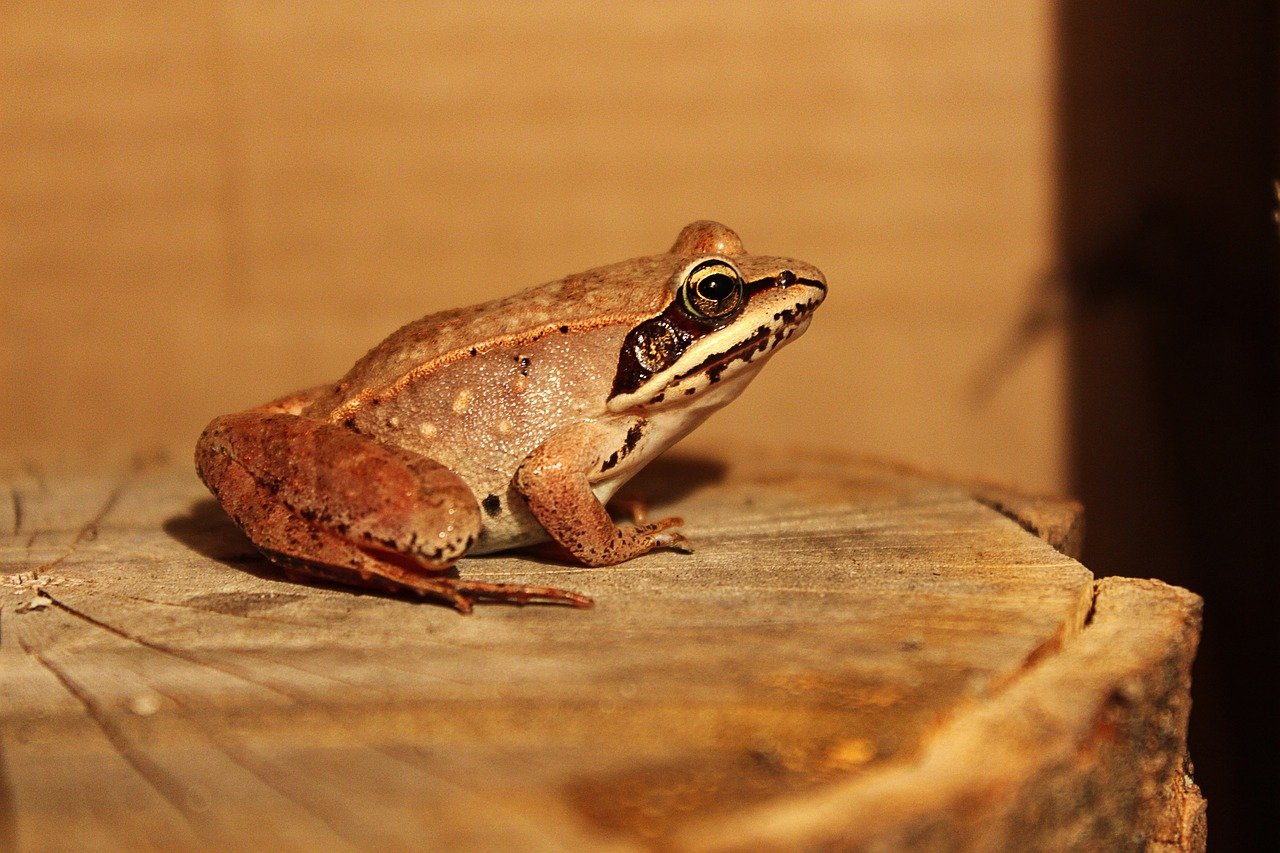
Camera Traps and Drones
The advent of camera traps and drones has revolutionized the way wildlife is monitored, especially during the tumultuous times of the COVID-19 pandemic. These technologies have emerged as vital tools, allowing researchers and conservationists to gather critical data without the need for direct human interaction in the field. Imagine being able to observe the secret lives of animals without ever stepping foot in their habitat—this is precisely what these tools enable. Camera traps, which are motion-activated devices that capture images or videos of wildlife, have become essential for studying animal behavior, population dynamics, and habitat use.
During the pandemic, when traditional fieldwork was heavily restricted, the use of camera traps surged. They provide a non-invasive method to collect data, enabling researchers to monitor wildlife activity over extended periods. For instance, a study conducted in a national park may utilize dozens of camera traps strategically placed throughout various ecosystems. This approach allows for the collection of thousands of images, offering insights into species diversity and behavior without disturbing the animals. The data gathered can help inform conservation strategies and assess the health of ecosystems.
Drones, on the other hand, have added a new dimension to wildlife monitoring. Equipped with high-resolution cameras and advanced sensors, drones can cover vast areas in a fraction of the time it would take a human team. This capability is particularly beneficial for monitoring inaccessible or hazardous terrains. For example, researchers can use drones to survey remote habitats, track migratory patterns, or even assess the impact of human activities on wildlife. The aerial perspective provided by drones allows for a comprehensive view of wildlife populations and their environments.
Both camera traps and drones have proven effective in documenting changes in wildlife behavior during the pandemic. With reduced human activity in many areas, animals have begun to reclaim spaces that were once bustling with human presence. For instance, wildlife that typically shies away from populated areas has been observed venturing closer to urban environments. This shift presents a unique opportunity to study how wildlife adapts to changing landscapes and the potential long-term effects of human encroachment.
Moreover, the collaboration between technology and citizen science has blossomed during this period. Many conservation organizations have engaged local communities to participate in wildlife monitoring using camera traps and drones. By training volunteers to operate these devices, researchers can expand their data collection efforts while fostering a sense of stewardship within the community. This partnership not only enhances data quality but also raises awareness about the importance of wildlife conservation.
In conclusion, the integration of camera traps and drones into wildlife research has proven to be a game-changer during the COVID-19 pandemic. These technologies not only facilitate data collection in challenging times but also open up new avenues for understanding wildlife behavior and conservation needs. As we move forward, embracing these innovative tools will be crucial in adapting our conservation strategies to meet the ever-evolving challenges posed by both natural and human-induced changes in the environment.
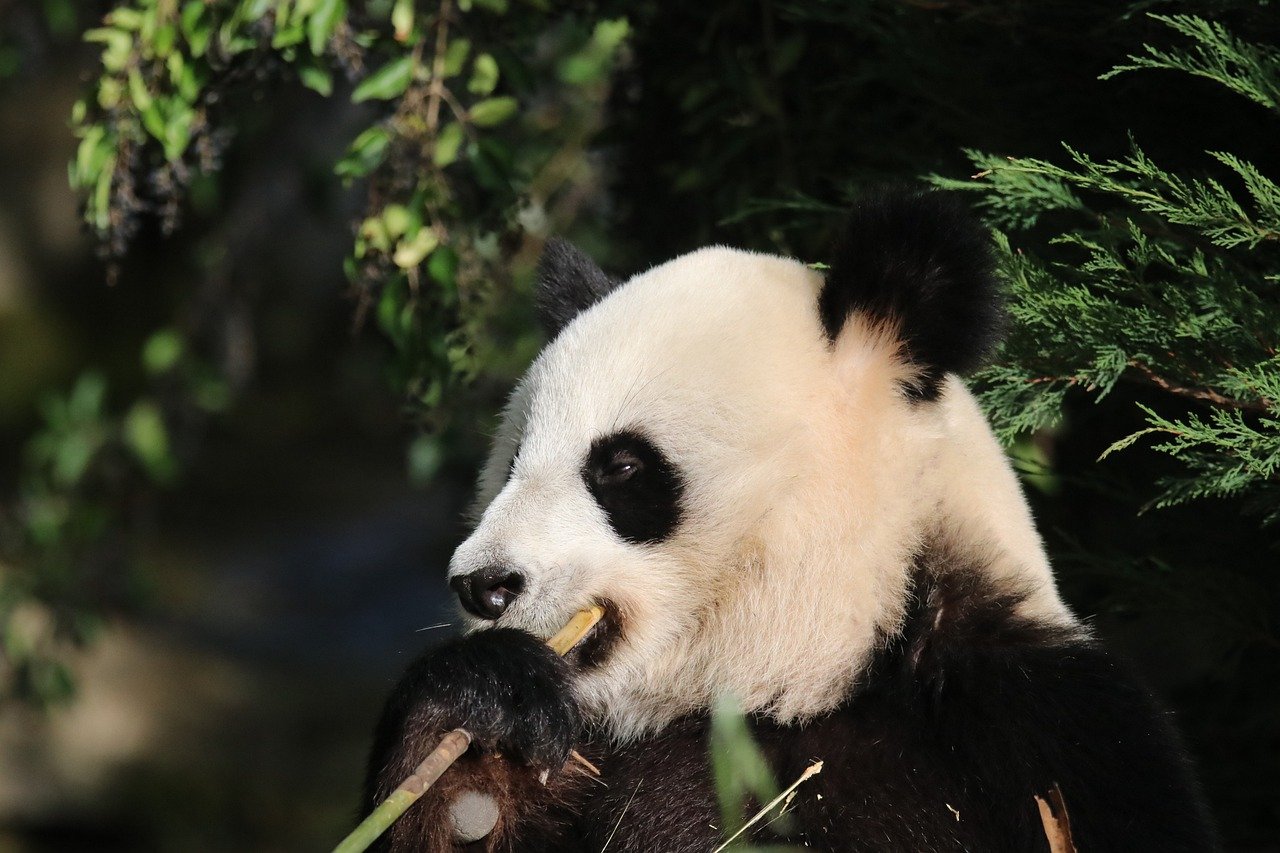
Citizen Science Initiatives
During the COVID-19 pandemic, the concept of citizen science has taken on a whole new meaning. With researchers facing restrictions on fieldwork and data collection, communities around the world have stepped up to fill the gaps left by the absence of professional scientists in the field. This surge in public involvement has not only enhanced our understanding of wildlife but has also fostered a stronger connection between people and nature. Imagine a world where everyday individuals contribute to groundbreaking research simply by observing and reporting wildlife in their backyards or local parks—this is the essence of citizen science.
One of the most exciting aspects of citizen science initiatives is their ability to harness the power of technology. Many projects now utilize mobile apps and online platforms that allow participants to document their observations, upload photos, and share data in real-time. For instance, platforms like iNaturalist and eBird have seen a significant uptick in user engagement during the pandemic. These tools not only make it easy for individuals to contribute but also provide researchers with a wealth of data that can be analyzed to track changes in wildlife populations and behaviors.
Moreover, citizen science has proven to be a vital tool for monitoring biodiversity. With many professional researchers unable to conduct field studies, volunteers have stepped in to help collect data on various species. This grassroots approach has led to the discovery of new behaviors and patterns in wildlife that might have otherwise gone unnoticed. For example, in urban areas, residents have reported seeing more wildlife in their neighborhoods due to decreased human activity, providing valuable insights into how animals adapt to changes in their environment.
However, while the enthusiasm for citizen science is commendable, it's essential to address the challenges that come with it. Ensuring that data collected by non-professionals is reliable and scientifically valid can be a concern. To tackle this, many initiatives incorporate training sessions and guidelines for participants, helping them understand best practices for observation and reporting. This not only enhances the quality of the data collected but also empowers individuals with knowledge about their local ecosystems.
As we look to the future, the role of citizen science in wildlife conservation is likely to grow. The pandemic has shown us that when communities come together, they can make a significant impact on conservation efforts. By fostering a sense of stewardship and encouraging participation in wildlife monitoring, we can create a more informed and engaged public, ultimately leading to better protection of our planet's biodiversity. The collaboration between scientists and citizens has the potential to transform conservation practices, making them more inclusive and effective.
- What is citizen science? Citizen science involves the public in scientific research, allowing non-professionals to contribute to data collection and analysis.
- How can I get involved in citizen science? You can participate by joining local initiatives, downloading relevant apps, or contributing to online platforms dedicated to wildlife observation.
- What are the benefits of citizen science? It enhances public awareness of environmental issues, provides valuable data for researchers, and fosters a sense of community and stewardship for nature.
- Are the data collected by citizen scientists reliable? While there are challenges, many initiatives provide training and guidelines to ensure the quality and reliability of the data collected.
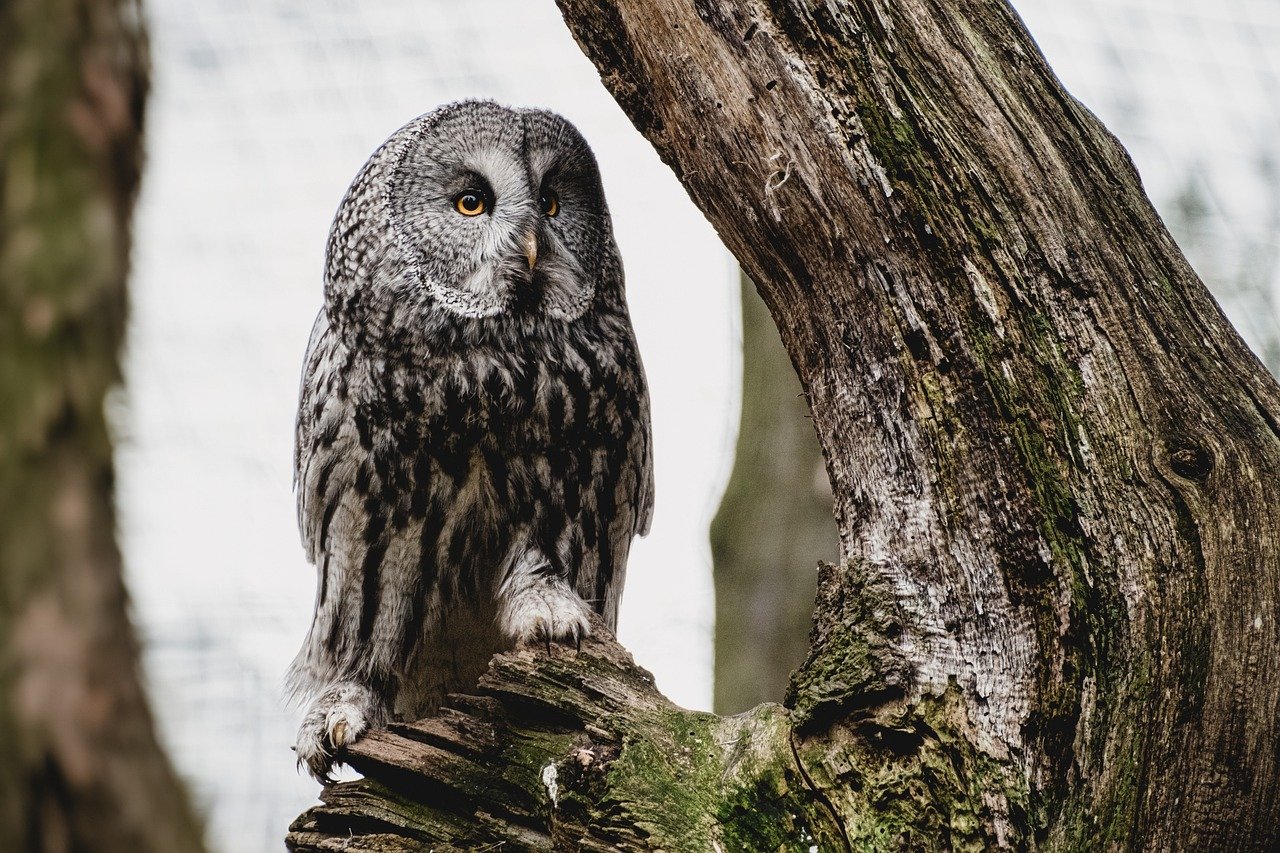
Shifts in Wildlife Populations
The COVID-19 pandemic has brought about a seismic shift in the dynamics of wildlife populations across the globe. With humans retreating into their homes during lockdowns, many species experienced a rare reprieve from the usual disturbances caused by human activities. Imagine a bustling city suddenly falling silent; the streets once filled with cars and people transformed into quiet pathways where wildlife could roam freely. This unexpected tranquility has allowed certain species to thrive, while others have faced new challenges.
In urban areas, reports of wildlife venturing into previously crowded spaces became common. Animals like deer, foxes, and even wild boars were spotted wandering through city parks and streets, reclaiming territories that had been dominated by human presence. This phenomenon raises intriguing questions about wildlife adaptability and resilience. How do these animals adjust to such rapid changes in their environment? In many cases, they seem to adapt remarkably well, showcasing their ability to take advantage of reduced human interference.
Conversely, some species have faced dire consequences due to the pandemic's impact on conservation efforts. With funding cuts and restricted access to protected areas, conservationists struggled to monitor and support vulnerable populations. For instance, anti-poaching patrols were significantly hampered, leading to increased risks for endangered species like elephants and rhinos. The pandemic highlighted the fragile balance between human activity and wildlife survival, reminding us how interconnected we truly are.
Moreover, the shifts in wildlife populations were not uniform. Different ecosystems reacted in varied ways, influenced by local conditions and species-specific behaviors. For example, in marine environments, reduced fishing activities during lockdowns allowed fish populations to rebound in certain regions. This phenomenon underscores the importance of sustainable practices and the potential for recovery when human pressures are alleviated.
To better understand these shifts, researchers have turned to innovative monitoring techniques. Utilizing remote sensing and data collection tools, they are tracking changes in wildlife behavior and population dynamics. Citizen science initiatives have also played a crucial role, as communities engage in wildlife observation and reporting, effectively becoming the eyes and ears of conservation efforts during these trying times.
As we reflect on the shifts in wildlife populations during the pandemic, it's essential to consider the implications for future conservation strategies. The lessons learned during this period could inform how we approach wildlife management in a post-COVID world. By recognizing the resilience of wildlife and the impact of human activity, we can develop more effective conservation policies that prioritize the well-being of both nature and humanity.
- What species have benefited from reduced human activity during the pandemic? Many urban species, such as deer and foxes, have been observed thriving in quieter environments.
- How has COVID-19 impacted endangered species? Funding cuts and restricted access to protected areas have increased risks for endangered species, particularly from poaching.
- What role does citizen science play in wildlife monitoring? Citizen science initiatives allow communities to engage in wildlife observation, helping to fill gaps in research and conservation efforts.
- Can wildlife populations recover after human disturbances? Yes, many species have shown remarkable adaptability and resilience, rebounding when human pressures are reduced.
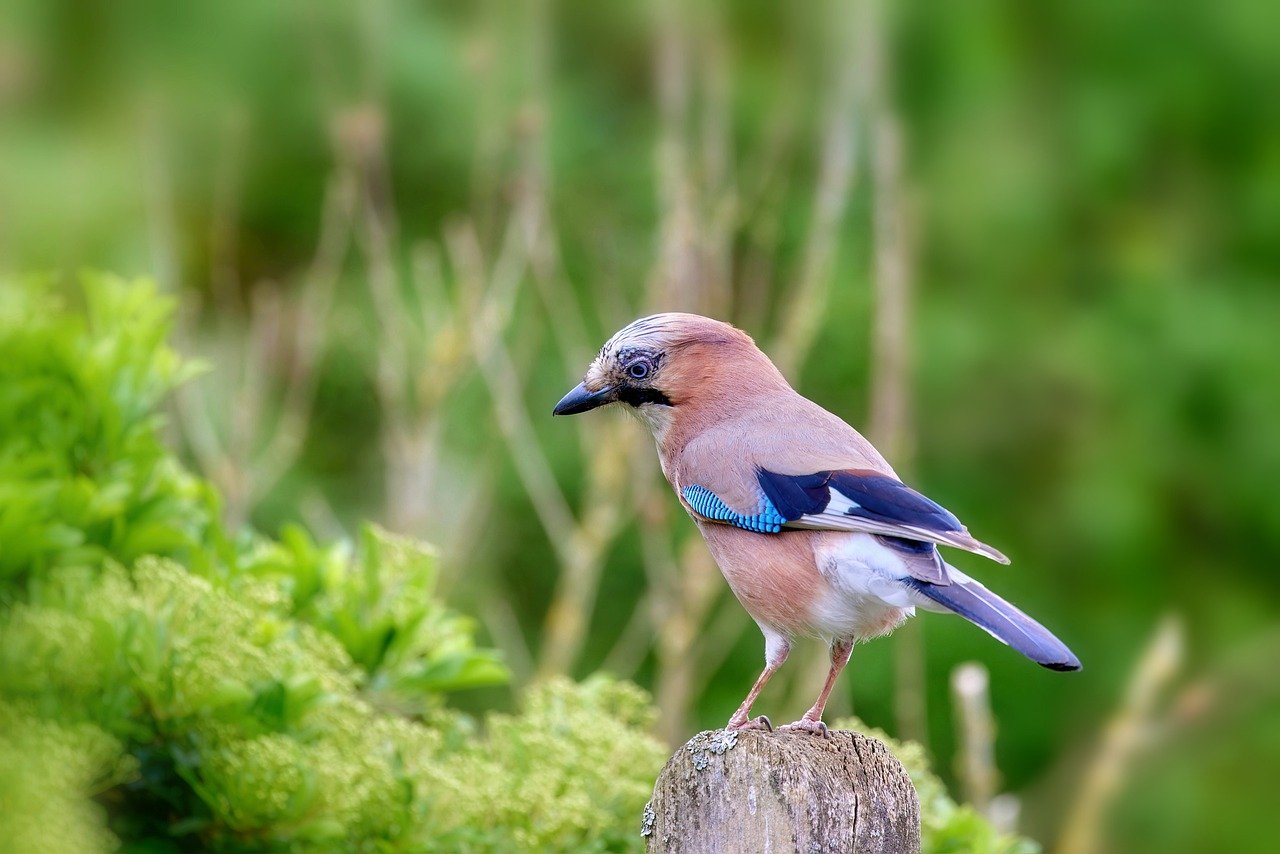
Legislation and Policy Changes
The COVID-19 pandemic has acted as a catalyst for reevaluating wildlife protection laws across the globe. As the world grappled with the implications of zoonotic diseases, many governments recognized the urgent need to tighten regulations surrounding wildlife trade and conservation practices. This shift in focus has led to a series of legislative changes aimed at enhancing the protection of vulnerable species and their habitats. It's fascinating to see how a health crisis can intertwine with environmental concerns, isn’t it?
One of the most significant outcomes of the pandemic has been the increased scrutiny of wildlife trade. Prior to COVID-19, wildlife trade was often viewed through a lens of economic benefit, with little regard for the potential ecological consequences. However, as the virus was linked to wildlife markets, governments began to implement stricter regulations to curb illegal trade practices. These new laws not only aim to prevent future outbreaks but also serve to protect endangered species that are often victims of poaching and habitat destruction.
For instance, countries like China have taken bold steps by banning the trade and consumption of wild animals. This landmark decision is not just a reactionary measure; it reflects a growing understanding that wildlife conservation and public health are intricately connected. In fact, the World Health Organization (WHO) has emphasized the importance of addressing wildlife trade as a critical component of preventing future pandemics. The implications of these legislative changes are profound, offering a glimmer of hope for conservationists worldwide.
Moreover, the management of protected areas has faced unique challenges during the pandemic. With travel restrictions in place, many conservationists found it difficult to access these crucial habitats. In response, various governments and organizations have adapted their strategies to ensure that protected areas remain safeguarded. This includes utilizing technology for remote monitoring and engaging local communities in conservation efforts. The shift towards more inclusive management practices not only empowers communities but also enhances the effectiveness of conservation initiatives.
As we navigate this new landscape, it's essential to recognize the role of public awareness and advocacy in shaping legislation. Grassroots movements have gained traction, with individuals and organizations rallying for stronger wildlife protections. The pandemic has highlighted the interconnectedness of human health and environmental stability, making it clear that policy changes are not merely necessary but urgent. The challenge now lies in maintaining momentum and ensuring that these changes translate into effective conservation practices.
| Country | Legislation Changes | Impact |
|---|---|---|
| China | Ban on wildlife trade and consumption | Increased protection for endangered species |
| United States | Strengthened regulations on illegal wildlife trafficking | Enhanced enforcement and penalties |
| European Union | Review of wildlife import regulations | Improved monitoring of species at risk |
In conclusion, the pandemic has not only reshaped our understanding of public health but has also provided a unique opportunity to rethink wildlife conservation policies. As countries continue to adapt and implement new regulations, it is crucial for stakeholders to collaborate and share best practices. The road ahead may be fraught with challenges, but it is also filled with potential for creating a more sustainable and equitable future for both wildlife and humanity.
- What are zoonotic diseases? Zoonotic diseases are illnesses that can be transmitted from animals to humans, often leading to significant health crises.
- How has COVID-19 impacted wildlife trade? The pandemic has led to increased regulations and bans on wildlife trade, as it has been linked to the spread of the virus.
- What role do protected areas play in wildlife conservation? Protected areas are crucial for safeguarding habitats and species, providing safe havens for wildlife away from human interference.
- How can individuals contribute to wildlife conservation during the pandemic? Individuals can engage in advocacy, support conservation organizations, and participate in citizen science initiatives to help monitor wildlife.
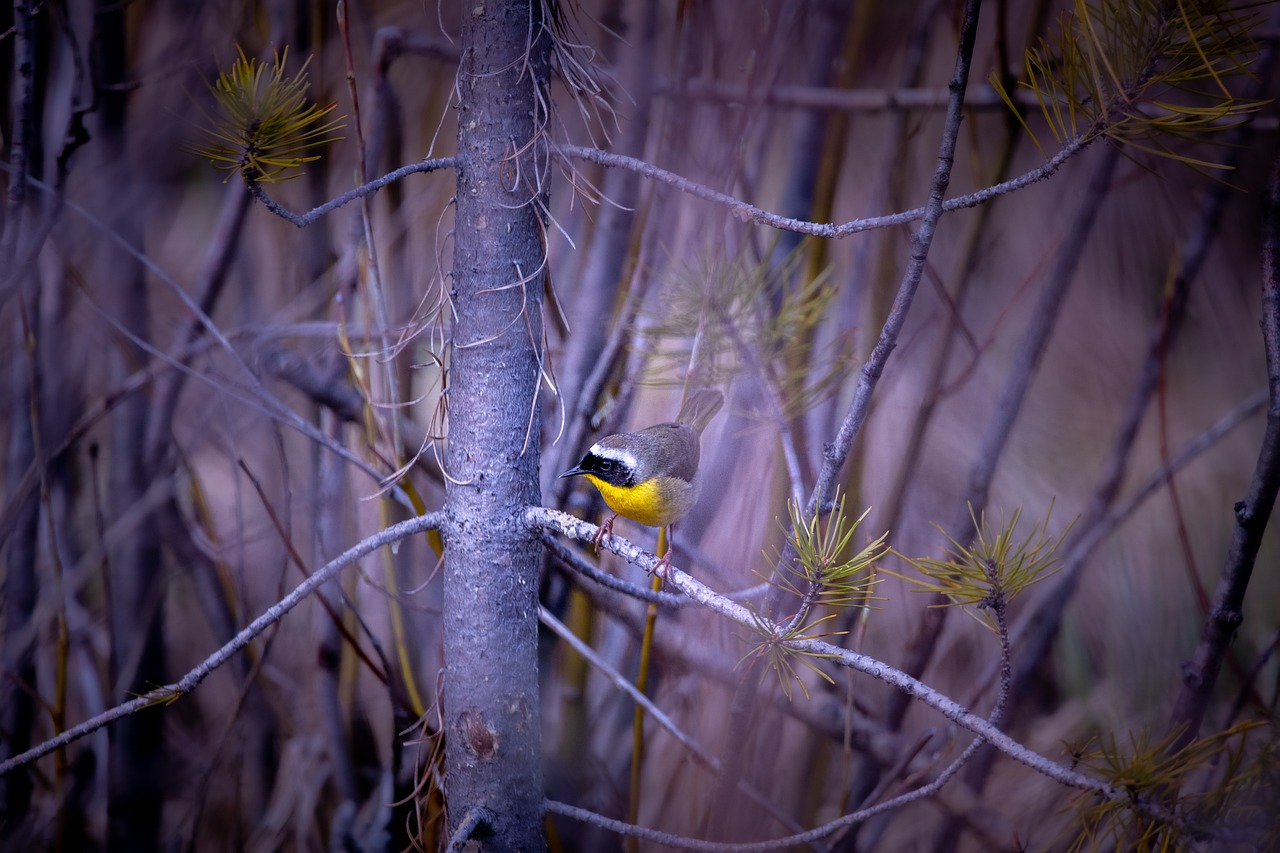
Wildlife Trade Regulations
The COVID-19 pandemic has acted as a wake-up call for many nations regarding the importance of regulating wildlife trade. As the world grappled with the outbreak, it became increasingly clear that unsustainable and illegal wildlife trade could pose serious risks not only to biodiversity but also to human health. This realization has led to a surge in discussions around the need for more stringent regulations and enforcement mechanisms aimed at curbing wildlife trafficking.
One of the most notable outcomes of the pandemic has been the increased scrutiny of wildlife trade practices. Governments and conservation organizations have recognized that zoonotic diseases—those that jump from animals to humans—often have roots in wildlife markets and illegal trade. As a result, many countries have begun to reassess their existing wildlife protection laws and implement new regulations aimed at preventing such occurrences in the future. For instance, several nations have temporarily banned the sale of wildlife in markets, while others are considering permanent changes to their wildlife trade policies.
In addition to national regulations, international cooperation has also become crucial. The Convention on International Trade in Endangered Species of Wild Fauna and Flora (CITES) has been pivotal in advocating for the protection of endangered species. The pandemic has prompted CITES to strengthen its stance on illegal wildlife trade, urging member countries to enhance their enforcement capabilities and share best practices. This collaborative approach is essential for creating a unified front against wildlife trafficking.
Moreover, the pandemic has revealed the need for greater public awareness regarding the consequences of wildlife trade. Educational campaigns aimed at informing communities about the risks associated with illegal wildlife markets are gaining traction. Many organizations are leveraging social media and other platforms to spread the message that protecting wildlife is not just an environmental issue; it's a public health concern as well.
To illustrate the evolving landscape of wildlife trade regulations, consider the following table that highlights recent policy changes in various countries:
| Country | New Regulation | Date Implemented |
|---|---|---|
| China | Ban on wildlife consumption | February 2020 |
| Thailand | Strengthened penalties for wildlife trafficking | June 2020 |
| United States | Increased funding for wildlife enforcement | January 2021 |
| South Africa | New regulations on the trade of endangered species | March 2021 |
As these regulations evolve, it’s essential to monitor their effectiveness. Are they truly making a difference in curbing illegal wildlife trade? This question remains at the forefront of conservation discussions. While new laws are a step in the right direction, their success largely depends on enforcement and the commitment of local communities to participate in conservation efforts.
In conclusion, the pandemic has underscored the urgent need for comprehensive wildlife trade regulations. As nations adapt to the new normal, the hope is that these changes will not only protect vulnerable species but also safeguard human health. The battle against illegal wildlife trade is far from over, but with increased awareness and collaboration, there is a glimmer of hope for a more sustainable future.
- What are zoonotic diseases? Zoonotic diseases are infections that are transmitted from animals to humans, often through direct contact or consumption of animal products.
- How does wildlife trade impact conservation? Unsustainable wildlife trade can lead to population declines and extinction of species, disrupting ecosystems and biodiversity.
- What role do international agreements play in wildlife protection? International agreements like CITES help regulate and monitor the trade of endangered species, promoting cooperation among countries.
- How can individuals contribute to wildlife conservation? Individuals can support conservation efforts by educating themselves, advocating for sustainable practices, and supporting organizations dedicated to wildlife protection.
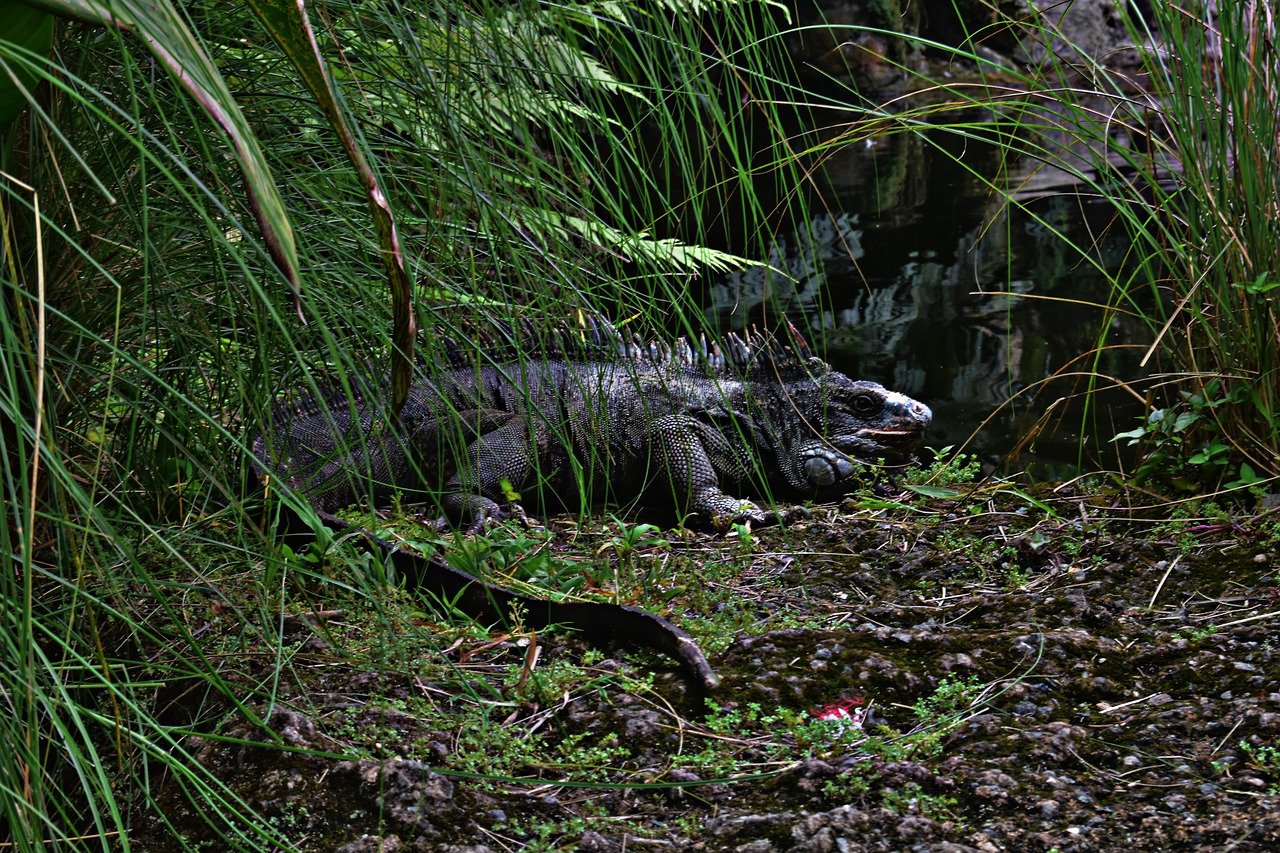
Protected Areas Management
The management of protected areas has faced a myriad of challenges during the COVID-19 pandemic, fundamentally altering how conservationists operate. With travel restrictions and social distancing measures in place, many conservation programs were forced to adapt swiftly to maintain the integrity of these vital habitats. The pandemic highlighted the importance of flexibility and innovation in conservation strategies, as traditional methods became impractical. For instance, many field staff were unable to access remote areas, leading to a significant gap in monitoring and management activities.
Moreover, the sudden cessation of tourism, a primary source of funding for many protected areas, created a financial strain. Many parks and reserves rely heavily on visitor fees and related tourism activities to fund their operations. With the pandemic causing a drastic drop in visitors, conservationists had to explore alternative funding sources. This situation underscored the necessity for a diversified funding model that could withstand future crises. To address these challenges, some organizations turned to digital platforms for fundraising, engaging with supporters through virtual events and campaigns.
In response to these hurdles, conservationists have also embraced technology in unprecedented ways. For example, the use of remote monitoring tools has surged, allowing for ongoing surveillance of wildlife populations without the need for physical presence in the field. These tools not only help in gathering essential data but also play a crucial role in reducing human impact on sensitive ecosystems. The integration of technology in protected area management is a promising shift, offering a glimpse into the future of conservation practices.
Additionally, the pandemic has prompted a reevaluation of conservation priorities. As human activities decreased, wildlife began to reclaim areas previously dominated by human presence. This phenomenon provides valuable insights into the resilience of nature and the potential for recovery when human pressures are alleviated. Conservationists are now tasked with understanding these changes and adapting management strategies accordingly. For instance, some protected areas are considering how to incorporate these newfound dynamics into their long-term planning and management approaches.
In conclusion, while the COVID-19 pandemic has posed significant challenges to the management of protected areas, it has also opened doors for innovative solutions and a rethinking of conservation priorities. As we move forward, the lessons learned during this crisis can pave the way for more resilient and adaptable conservation strategies that not only protect wildlife but also enhance the relationship between humans and nature.
- What are protected areas? Protected areas are regions designated for the conservation of wildlife and natural resources, often managed to preserve biodiversity.
- How has COVID-19 impacted wildlife in protected areas? The pandemic has led to reduced human activity, allowing wildlife to thrive in areas they typically avoid, which has changed some population dynamics.
- What technologies are being used in protected area management? Technologies such as remote monitoring tools, drones, and camera traps have become essential for managing wildlife and gathering data without direct human presence.
- How can I support wildlife conservation during the pandemic? You can support conservation efforts by donating to organizations, participating in virtual events, or engaging in citizen science projects.
Frequently Asked Questions
- How has COVID-19 impacted funding for wildlife conservation?
The pandemic has led to significant budget cuts and delays in wildlife conservation projects. Many organizations that rely on donations and government grants have experienced a drop in funding, making it difficult to sustain their efforts. As a result, conservationists are now exploring new funding sources and innovative strategies to adapt to these financial challenges.
- What changes have occurred in field research due to COVID-19?
Field research has faced numerous restrictions during the pandemic, which has forced researchers to adapt their methodologies. Many have turned to remote monitoring techniques, allowing them to collect data without being physically present in the field. This shift has opened up new avenues for research and has encouraged the use of technology in wildlife studies.
- What are remote monitoring techniques, and how are they used in wildlife conservation?
Remote monitoring techniques include tools like camera traps and drones, which have become essential for studying wildlife during the pandemic. These technologies enable researchers to gather data on animal populations and behaviors without direct human interference, providing valuable insights while minimizing disruptions to wildlife.
- Have there been any observable shifts in wildlife populations during the pandemic?
Yes, the pandemic has led to noticeable changes in wildlife behavior and populations. With reduced human activity in various environments, some species have ventured into areas they previously avoided. This shift has highlighted the resilience of wildlife and the impact of human presence on their natural behaviors.
- What legislative changes regarding wildlife protection have emerged due to COVID-19?
In response to the pandemic, many governments have reevaluated their wildlife protection laws. This has resulted in increased scrutiny of wildlife trade and the introduction of new regulations aimed at preventing zoonotic diseases. These changes are crucial for enhancing conservation efforts and ensuring the protection of vulnerable species.
- How have protected areas been managed during the pandemic?
The management of protected areas has faced unique challenges due to COVID-19 restrictions. Conservationists have had to adapt their strategies to maintain these crucial habitats while ensuring the safety of staff and visitors. Innovative approaches, such as virtual monitoring and community engagement, have emerged to support the ongoing conservation of these areas.



















